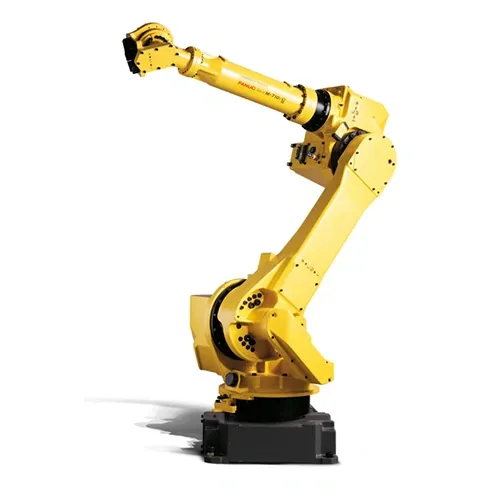Automatic Welding Robot
Automatic welding robot has been developed to increase speed and quality in production processes. Thanks to these robots, human error is reduced to a minimum. It is a modern technology particularly preferred in sectors involving mass production.
Automatic welding robot also offers significant advantages to businesses in terms of occupational safety. By using robots, there is a substantial reduction in labor costs. Complex welding operations can be easily performed with a welding robot.
What Is an Automatic Welding Robot?
In industrial production, systems that enable the automation of welding processes play a vital role. These systems increase efficiency in production by reducing human intervention. Additionally, they ensure a standard level of quality and safety in welding operations.
Automation systems have a wide range of applications in various sectors. In particular, they are commonly used in the automotive and metal processing industries. For large-scale manufacturers, such investments offer long-term cost advantages.
These systems reduce labor costs and provide savings for companies. They shorten production times and increase overall production capacity. Furthermore, by raising occupational safety standards, they help ensure a safer working environment for employees.
Standardizing welding quality independently of the human factor ensures high precision in production. By eliminating manual welding errors, product quality is increased. As a result, customer satisfaction is achieved.

Thanks to their programmable structure, they can adapt to various part sizes and geometries using different robotic arms. This flexibility allows quick responses to diverse production needs. For this reason, it has become a widely preferred technology in many industries.
Today, industrial laser technology is also integrated into these systems. This technology enables the easy execution of highly precise joining operations. Additionally, it minimizes the need for post-weld processing.
How Does an Automatic Welding Robot Work?

These systems are industrial devices with pre-programmed motion capabilities. Their operating principle is based on defining the parts to be welded to the robot arm. In this way, the production process is managed systematically and without error.
Welding parameters are programmed in detail before the process. Current, speed, and positioning information are accurately entered into the system. Thus, the operations are carried out without the need for operator intervention.
During the programming phase, part characteristics and the type of welding are taken into account. For example, lower current values are preferred for thin materials, while higher current is applied for thicker parts. This approach helps provide the most suitable welding conditions for each component.
During production, the welding quality is constantly monitored. Quality issues caused by human error are minimized. Moreover, time is saved, and production capacity is increased.
These systems provide high efficiency, especially in businesses engaged in mass production. By reducing welding errors, the defect rate in the production process is lowered. This translates into a fast return on investment for companies.
Thanks to advanced software systems, every stage of the welding process is automatically monitored. They can be easily integrated into different production lines. This integration ensures flexibility and compatibility in manufacturing processes.
They can successfully perform welding operations on various types of metals such as steel, aluminum, and stainless steel. This broad compatibility makes them indispensable in many industrial fields. With their high performance, they contribute to increased quality and efficiency in production processes.

